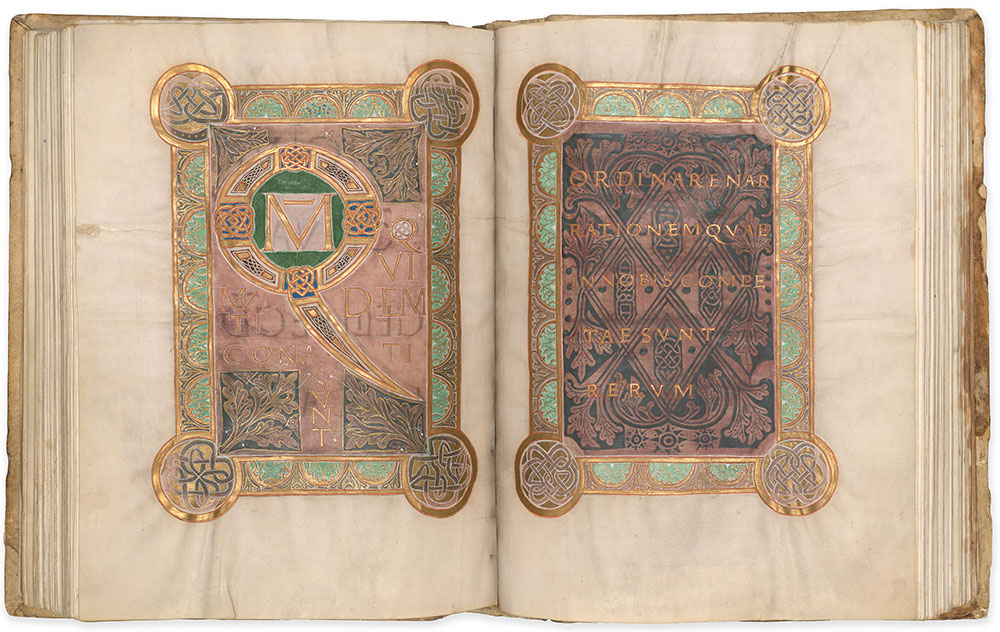
OTTONIAN BEGINNINGS
This Gospel book was likely made for the imperial convent of Quedlinburg, among the most important foundations in Saxony. Established in 936 by Otto I and his mother, Mathilda, the abbey served as a memorial site for the Ottonian family. Its abbesses were Ottonian princesses, many of whom were actively engaged in politics. Befitting such prestige, this manuscript is one of the largest and most splendidly illuminated products of the Corvey scriptorium. Luke’s Gospel begins with an elaborate interlace initial Q framed by monochrome textile designs in the corners. The text continues in gold on the facing page, set against a striking textile background in shades of purple. The evocation of luxury objects like silk cloth relates to Otto’s extensive diplomatic activities, which resulted in the exchange of precious goods from centers spanning from Córdoba to Constantinople.
"Quedlinburg Gospels," in Latin
Germany, Corvey, ca. 950–70
The Morgan Library & Museum, MS M.755, fols. 99v–100r
Purchased, 1929
Joshua O'Driscoll, Assistant Curator of Medieval and Renaissance Manuscripts
Beginning around the middle of the tenth century, Otto the Great, or members of his family, began commissioning a number of deluxe manuscripts from the scriptorium at Corvey—an important monastery in Saxony. Little is known about the exact circumstances of their production, but both the script and illumination of these manuscripts suggest close ties with the imperial family. Based on their early histories of ownership, these manuscripts were likely produced for export as imperial gifts.
This gospel book is among the largest and most splendidly illuminated products of Corvey in the tenth century. It was likely made for the convent of Quedlinburg, which served as a mausoleum for the imperial family. Each of the four gospels in this book begins with a sumptuous four-part sequence of ornamental text pages. Shown here is the opening for the Gospel of Luke, the first word of which (quoniam) is formed by an elaborate initial Q framed by monochromatic textile designs in the four corners. The sacred text continues in gold on the facing page, which likewise features a striking textile design for the background. These pages exemplify the new style of painting developed by illuminators at Corvey—a style that was largely abstract and inspired by precious luxury objects like silk textiles, gems, enamels, and metalwork.
Ornate in the extreme, these manuscripts were meant to do more than just dazzle their viewers. The particular approach to painting developed at Corvey demonstrated not only the wealth and munificence of the imperial family, but also the international status of their power.
